Sports
Meet the man who brought the World Cup to the U.S.
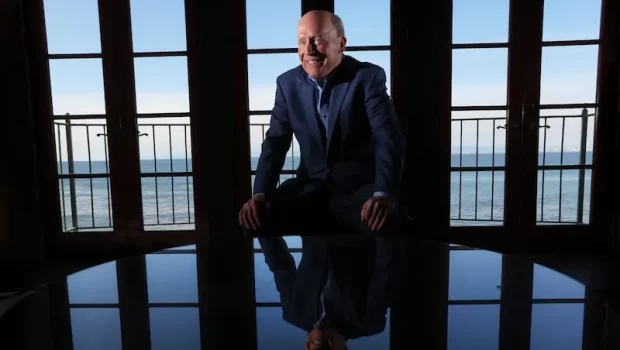
PALOS VERDES ESTATES, California — While serving a church mission in Germany in 1974, Scott LeTellier faced a dilemma. West Germany was hosting the World Cup and LeTellier needed a way to watch it. “I thought, I can’t miss it — this is the greatest thing in the world,” he said. So LeTellier got creative about the solution. In Erlangen, a Bavarian city, he summoned the courage to knock on the door of one of the town’s fraternities, the exterior adorned with flags and plumes. He told the fraternity members who answered the door that he, too, was part of a fraternity— at the University of Tennessee. They invited him and his companion in. And so, along with 40 or so frat boys sliding beers from one end of a long table to the other, LeTellier watched the tournament in awe.
“The nationalism, skill and conditioning level were the coolest thing I’ve ever seen,” LeTellier told me over lunch at the Palos Verdes Beach and Athletic Club in the tony coastal city of Palos Verdes Estates, about an hour south of Los Angeles, where LeTellier lives with his wife, Patsy. “I was hooked.”
That experience — 50 years ago this summer — set in motion LeTellier’s remarkable journey to champion the bid for the United States to host its first FIFA World Cup in 1994 and then to orchestrate the planning of the tournament. “That ‘94 World Cup was the pivot point for soccer in our country — no question,” LeTellier told me. He was a young attorney who loved soccer and saw a window of opportunity. “I was just ahead of my time.”
Since then, soccer in the U.S. has skyrocketed in popularity, viewership and the money spent on the sport.
And it’s about to get even bigger in 2026, when the U.S. will jointly host the FIFA World Cup with Mexico and Canada, the biggest tournament yet, with 104 matches across 16 cities in three countries. New Jersey’s MetLife Stadium will hold the final match of the championship. This time, LeTellier isn’t involved in planning: The organizing is spearheaded by FIFA, which has moved nearly 100 jobs from its headquarters in Zurich to south Florida. “They’ve taken the entirety of the local organizing tasks on them,” he explained, much like the NFL did with the Super Bowl. “There is not really a local organizing committee like we had — we were one of a kind.”
Meanwhile, LeTellier is gearing up for an epic summer. At the summer Olympics in Paris, he and his wife will watch beach volleyball in front of the Eiffel Tower, equestrian show jumping at Versailles and a cycling event at the massive Velodrome. But he’s most thrilled about returning to Germany this June to show Patsy where his love for soccer took root. The trip is also a quest to track down Andy, a 12-year-old from a Stuttgart Latter-day Saint ward, who taught LeTellier a crash course in soccer. “I don’t know what happened to him, so that’s part of the reason I’m going — to track him down, to solve some mysteries.”
Learning from his father
My visit with LeTellier, who just turned 73, starts with a tour of the local attractions of Palos Verdes Estates. First, we stop at the Malaga Cove Plaza, where LeTellier wanted to show me a Neptune statue, a copy of a sculpture by Flemish artist Giambologna. The white blossoms of wild pear trees in the plaza hinted that spring was near. We drive toward the coast next, where the couple show me an ornate home belonging to a friend, with a lush lawn, a fountain and balconies overlooking the ocean. The couple got married there in October.
We then meander across the street to an Italian villa-style church, originally a private mansion owned by a generous pillar of society, LeTellier explains. “Turns out he was a bootlegger,” LeTellier laughs, noting that eventually the family donated the building to the church. LeTellier lives just a quarter mile away and has gotten to know the area quite well since moving there in 1992.
LeTellier came prepared for our interview. From his suit jacket, he pulls out a few folded copies of old newspaper stories about him. He’s known for two things, he tells me: He’s the guy who wrote the bid document in 1988 that got FIFA to the U.S., and then mortgaged his house in Irvine, California, to pay the initial costs and salaries to get the World Cup going. But the journey of bringing the world championship to the U.S. began much earlier.
LeTellier fell in love with sports — first baseball and basketball — by watching his father, who was a doctor for the Milwaukee Braves baseball team and treated injured players. The Braves’ move to Atlanta was “the most devastating day of my life,” LeTellier said. To cheer him up, his father brought him to the local tennis club. Later, as a junior at the University of Tennessee, LeTellier was the captain of the tennis team. “That became a nice rebound from baseball,” he said.
When LeTellier was in sixth grade, he and his father made a list of 15 major international sporting events he dreamed of attending: one event per sport, including the NCAA final, a Rose Bowl game for college football, a world heavyweight championship. The World Cup was on the list, but mostly because he felt it was too big of an event to leave out. Soccer was largely absent from his community in Wisconsin — he recalled teams of the Germans, the Ukrainians, the Poles and the Hungarians in Milwaukee, but his own high school didn’t have a team.
”I knew who Pelé was, but beyond that I couldn’t tell you a thing about soccer,” he told me, referring to the famous Brazilian soccer player.
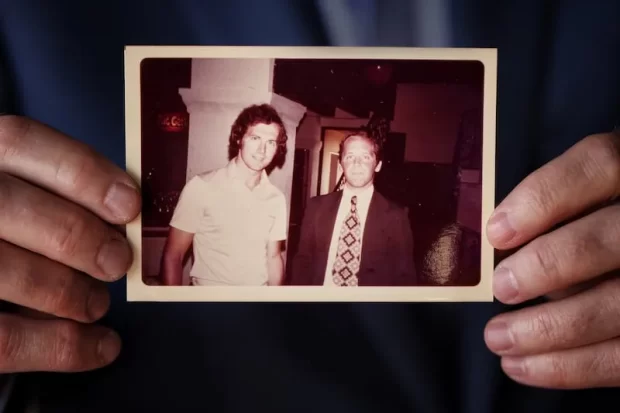
Education in soccer
Filling this gap in soccer knowledge became a kind of challenge for LeTellier on his mission. He was missing American sports, so he asked his dad to include the tear-out sports pages from the Milwaukee Journal Sentinel in his weekly letters. That way, LeTellier could see the standings, the box scores and results, along with his dad’s message.
When serving his mission in Munich, LeTellier spotted a newspaper headline with words “Ajax” and “Bayern” that, despite the six years of German under his belt and being a grandson of a Swiss German, he could not decipher. He eventually pieced together the news behind the headline: The Amsterdam soccer team Ajax was playing against the Munich’s Bayern team. “I got kind of intrigued by that,” he told me.
But the true education in soccer happened in a Stuttgart ward, where LeTellier met Andy, a 12-year-old blond soccer player in a blue blazer, who seemed to know the answer to every one of LeTellier’s questions about soccer. Andy smuggled the issues of the Kicker magazine for LeTellier; it was a kind of European Sports Illustrated, only mostly focused on soccer. Within two months, LeTellier committed to memory 22 players who would be playing on the German national team for the World Cup, along with the 18 teams from the German Bundesliga, and the results of every World Cup since 1930. “I wanted to do it for history,” he tells me. “I’m a historian.”
That history felt especially close when, in 1974, LeTellier got to watch the World Cup at the German fraternity in Erlangen. Similarly, at one point, he even talked his way into a celebration party with the German national team after their World Cup victory. There, he handed the Book of Mormon to Franz Beckenbauer — German’s legendary soccer player, who recently died.
After completing his mission, a thought crystallized in his mind while watching the Montreal Olympics in 1976. “I thought, I’ve gotta be one of those guys who’s got the badges and is one of the organizers — that was my new goal in life,” said LeTellier, who was by then a law student at the Brigham Young University law school. So he started working toward the dream, which included a move to Los Angeles, where the Olympics would be held in 1984.
Championing the bid
In the beach club’s common room, LeTellier cracked the window open, letting the breeze and whoosh of the ocean pour into the room. The club has a 10-year wait list, but LeTellier snagged his membership when he first moved to the area. He used to take yoga classes at the club before the pandemic, but hasn’t gotten back to it yet.
Patsy, who lost her husband three years ago, and LeTellier, who also was previously married, met at a singles conference. LeTellier’s sincere curiosity in others drew her in, Patsy said. “He knows everyone,” she told me. He even kept a three-ring binder for recording names of the notable people in sports. “If we’re in a taxi cab going to the airport, by the time we’re done with that ride, we know everything about the driver and his family,” she told me. This openness to meeting people is partly how LeTellier turned his soccer passion into a career.
LeTellier was reading about the president of the United States Soccer Federation, Gene Edwards, when he decided to call him and ask if he could be involved. He began doing legal work for the Los Angeles-based California Soccer Association, while keeping his day job at a law firm in Orange County.
Meeting one guy led to meeting another guy and then another, and in 1981, 30-year-old LeTellier was hired as the assistant vice president of sports for the Los Angeles Olympics. In the job, he got to oversee Olympic soccer games and got to know all the FIFA people, becoming their day-to-day liaison.
The conversation about hosting the World Cup began percolating when the new president of the United States Soccer Federation and a former German soccer player, Werner Fricker, told LeTellier he wanted to put in the bid for the 1994 World Cup. When the time came to write the bid document, Fricker called up LeTellier, who had experience negotiating with stadiums and putting on sports events for the Olympics. The document was overdue, and Fricker wanted LeTellier to write it.
“I knew the type of thing that a European governing body in Zurich wanted,” LeTellier told me. “They wanted a technical document with details about transmission facilities.” So he got to work. At his law firm’s office, he spent the day making an outline of 14 sections addressing FIFA’s various demands for the World Cup. Then, section by section, LeTellier dictated the text of the bid, drawing on the tapestry of accumulated facts and experiences from the Olympics, working with FIFA, and his legal practice — all informed by his missionary experiences in Germany. A word processor typed LeTellier’s dictation and in two days, LeTellier had 130 pages of text for the bid. After fine-tuning it for a day, he delivered the draft for the committee’s review.
Through another connection, LeTellier overcame another bureaucratic hurdle: He brokered “government guarantees” from the secretaries of seven government cabinets that would allow imports into the U.S., and visas for those affiliated with the championship. He also dictated the official invitation letter from the White House, signed by President Ronald Reagan, welcoming the World Cup into the U.S.
On July 4, 1988, with the letter and tape from Reagan, the bid book containing contracts with all the U.S. stadiums, and the bid document itself, LeTellier arrived in Zurich as part of a 20-person delegation to vie for the World Cup. To prepare, he had memorized the names of the committee members.
He vigorously enunciates the long name of a Malaysian representative. “I rattled that off so many times,” he laughs. “It was a heady experience, orchestrating this whole thing at 38 years old.”

After the presentations were over, including those from competing countries Brazil and Morocco, LeTellier remembers Fricker’s face drenched in tears as he got word of FIFA’s decision. After FIFA made the announcement, in a surreal victorious moment, LeTellier and Fricker stood in front of the press. “The door opens, and there is a phalanx of photographers, flashbulbs blasting — and I’m thinking, this is my 15 minutes, right here,” he said. “This was pretty heady stuff.”
Just as LeTellier was about to head back to his idyllic life in Newport Beach, Fricker asked him to run the organizing committee for the 1994 World Cup. So LeTellier pulled the plug on his law practice and moved his family to Virginia. He hired a seven-person team and got to work. While figuring out how to pay for the World Cup, and team salaries, he opted to mortgage his house instead of taking financing from a “shifty” marketing guy who would have all the sponsorship rights. “I knew it would be a disaster if we let him do that, so I was racing to avoid that result,” he told me. In about three months, LeTellier was $110,000 in debt.
Ross Berlin was the third employee at World Cup USA and he remembered the magnitude of the task that was ahead of them. “This guy (LeTellier) was the right man for the job — he was a supreme strategist and very, very precise,” Berlin told me, adding that he was tasked with lining up the nine World Cup competition venues and dealing with civic authorities. “LeTellier staked his life and his reputation on the endeavor,” he said. “I admire that — that’s real gumption and belief to make it to the end.” Berlin and LeTellier often worked through the night thinking through a problem from every angle. “He wanted wisdom and counsel and advice before he made decisions,” he said.
In retrospect, maybe the decision to mortgage his house should have been more worrisome, LeTellier reflects, since he and his then-wife had just welcomed a fourth baby into the family. Eventually, however, the World Cup got bank financing from Manufacturers Hanover in New York with an $8 million line of credit.
LeTellier attributes his contributions to U.S. soccer history to the opportune timing of getting into the sport. “I vaulted into a leadership position in a matter of a few years just because I learned the sport and had the credentials of a law degree and some legal experience,” he told me. Since the 1980s, when the U.S. didn’t have a designated stadium for soccer, a lot has changed. Now, Major League Soccer comprises 29 teams, most of them with their own stadium. “The interest level, the attendance of the United States national team matches, the budget for U.S. soccer has just gone out of sight, television viewership is off the charts,” he said.
The sport’s ethnic and cultural diversity make it a perfect fit for America. “You got people from every continent playing,” he said. “It’s such a melting pot that it’s really the true American sport in a lot of ways.”
Leaving the beach club, LeTellier, in a blue blazer and sneakers, runs up a steep flight of stairs that leads back to the street. He still moves like an athlete. LeTellier tells me that among his proudest accomplishments is one that doesn’t have anything to do with soccer: Eight members of families he brought into The Church of Jesus Christ of Latter-day Saints went on to serve their own missions. “At the end of the day,” he said, “that’s far more meaningful to me.”Mortgaging his house
Is soccer now a true American sport?
-

 Premier League2 months ago
Premier League2 months agoChelsea fans praise one player for ‘babysitting Cucurella’ in Newcastle win
-
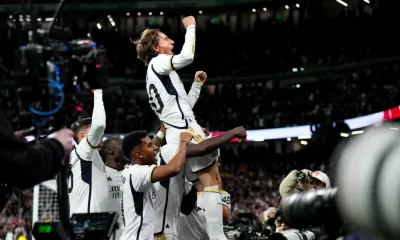
 News2 months ago
News2 months agoReal Madrid 1-0 Sevilla: Player ratings as Luka Modric earns vital win
-

 Transfer News2 months ago
Transfer News2 months agoChelsea told they’ll have ‘no option but to sell’ £87m star to Arsenal due to FFP issues
-
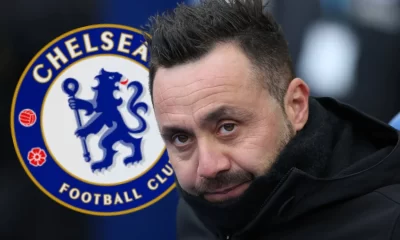
 News2 months ago
News2 months agoThe De Zerbi quote that will have Chelsea fans TERRIFIED
-

 News2 months ago
News2 months agoReal Madrid ‘reach verbal agreement’ to sign Alphonso Davies from Bayern Munich
-
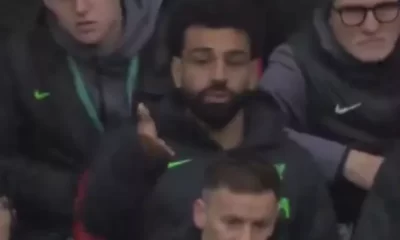
 News2 months ago
News2 months agoMohamed Salah’s furious reaction to Moises Caicedo spotted during Liverpool Carabao Cup win
-
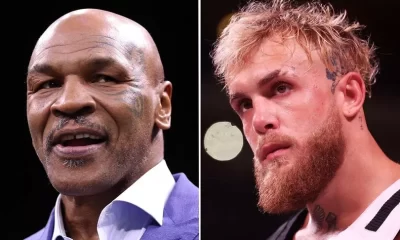
 Boxing2 months ago
Boxing2 months agoFans fear the worst for Jake Paul after Mike Tyson’s frightening social media update
-
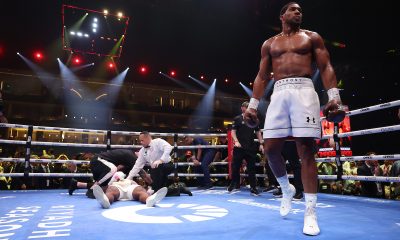
 Boxing2 months ago
Boxing2 months agoDevastating Anthony Joshua Wipes Out Francis Ngannou in Two Rounds









